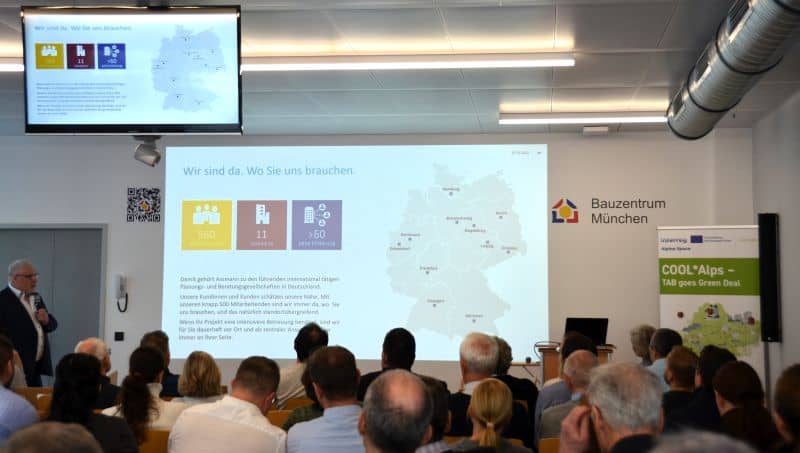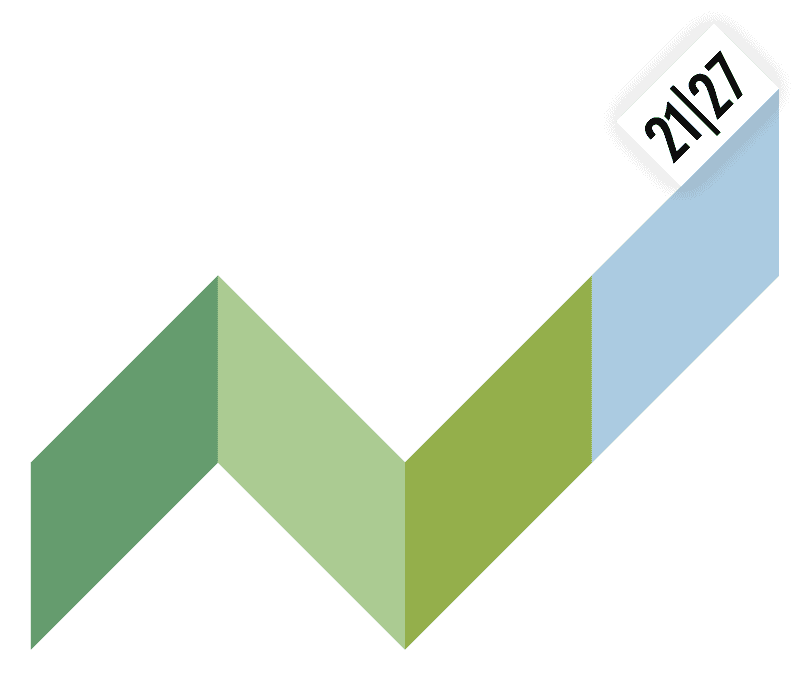Around 60 participants attended our “Cooling and heating with thermal activated buildings TAB” event as part of the Interreg Alpine Space Cool*Alps project and listened to exciting presentations. There were lively discussions on application examples, prospects and solutions for the individual challenges of our participants.
Michael Außendorf (Climate Centre / State Office for the Environment) emphasised that climate change will bring us significantly more hot days and tropical nights and that the issue of cooling buildings will play a greater role. In addition to technical solutions, such as TAB, there are also examples of nature-based solutions (e.g. green roofs or facades, preservation of trees, unsealing of surfaces).
Dr Berthold Mengede (Assmann Consulting + Planning) showed how TAB has been used in building construction for many years. With the current framework conditions (rising gas and oil prices, climate targets) and in combination with current trends and modern technologies (digital planning tools, intelligent control and regulation technology (AI), expansion of renewable energies), TAB will continue to change and open up new areas of application.
Matthias Kersken (Fraunhofer Institute for Building Physics IBP) focussed on the use of wind energy for heating and cooling buildings. This requires, for example, long-term thermal storage systems such as TABs or a high-temperature stone storage system developed in the “Wind Heating 2.0” project.
Prof. Dr.-Ing. Oliver Mayer presented the restructured “Energy and Construction” division of Bayern Innovativ. All companies from the construction industry are cordially invited to actively participate with their innovation topics and questions in order to master current challenges together.
Gregor Feig (Fahrenheit GmbH) presented the principle of adsorption refrigeration systems with application examples. These systems ideally complement component activation and solar thermal energy to create an overall solution with numerous advantages.
Constanze Rzihacek & Thomas Keller (University of Natural Resources and Life Sciences, Vienna) explained how three residential buildings in Vienna are being renovated for energy efficiency. In addition to an insulation layer, a thermal activation is also being integrated into the façade without affecting the residents.



